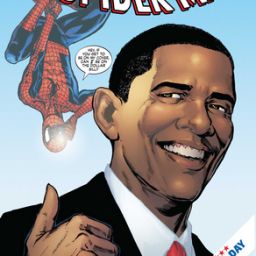I appreciate that you started your first Learned Fangirl post about SXSW writing about increased inclusiveness.
In addition to the panels you discussed, including How to Be Black Online, I was glad that there were varied discussions by and about people of difference, including about how disabled people use technology, women in technology and the glass ceiling, the GLBTQ community and technology, and about Jewish people and technology — including frum (very religious Jewish) participation. Of course, I started SXSW with my first session, a lively discussion about Asian-Americans belying the discussion title of Asians: The Silent Minority! (see also: Redefining Asians and the Internet: I Am Not Your Fetish).
I appreciated that those in the audience for the “people of difference” sessions I attended were genuinely interested in the discussion — both members of the community and those that are not members of the specific community being discussed. And that unfortunately is surprising, so I appreciate the tech community’s openness, especially in response to past criticism of lack of diversity at SXSW.
Three of the most interesting panels I attended during SXSW concerned bridging divides between different people — understanding how creative products are used differently internationally (Design, Collaboration, Pokemon: How Not to Offend People Globally), governments helping disseminate accurate health-based information — especially during a bcrisis, and informing a highly educated, tech-savvy/making audience about how and why a digital divide exists in the U.S.
Watching the panelists on When Swine Flew: Embracing Innovation in H1N1 Response reminded me of my long-ago love for public health. Panelists Andrew Wilson of the Department of Health & Human Services, Ann Aikin of the CDC, and David Hale from the National Library of Medicine discussed how they help their government agencies effectively spread accurate information — including via twitter. I appreciated hearing about how the taxonomy of terms being used is based on library abstracts for SemanticTwitter, “which focuses on semantic and natural language processing of H1N1-related Twitter posts for biosurveillance, determination of public sentiment, and targeted information dissemination.” And for the analytics lovers out there, there was also discussion of measuring effective media strategies.

But of course, I found How The Other Half Lives – Touring The Digital Divide, as presented by Jessamyn West and Jenny Engstrom, two superawesome librarians, to be the perfect capstone to explaining the ways that some are involved in the tech debates — and some aren’t. (And to get all Reading Rainbow, “you don’t have to take my word for it” — read the slides and hear the presentation). They presented on the digital divide between those with access to technology (and knowledge about the use of technology) and those without. Jessamyn’s focus is on the rural communities (specifically in Vermont) and Jenny’s focus is on the urban communities, including immigrants (specifically in New York).
I was impressed not only with the presentation — and that SXSW had such a presentation — but also that the members of the audience , the technological elite, were so interested in the on-the-ground digital divide. I expect that many came away with a greater understanding of not only their role in bridging that divide, but the importance of libraries and librarians in the difficult hand-holding information literacy that takes place in libraries daily.
And if you want to read the excellent twitter backchannel that as of this post is still continuing, the hashtag is #digitaldivide .
I hope that the organizers of SXSW continue to see the value of having so many attendees and speakers from the non-profit/education/government world — because they need to be in the heart of the discussions that the programmers and tech gurus have about the products that are being created and molded for use. A way of increasing inclusiveness would be to have sharply discounted rates for attendees from government and nonprofits.



Yay! I’m glad you liked it and thanks for pointing me to other programs I missed in my haste to present my own.